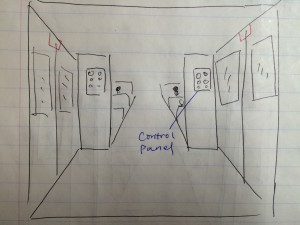Public Transportation
I live in Chicago and ride public transportation all the time, CTA train, CTA bus, Metra, you name it. Among these I usually like the Metra experience the most. It’s faster, cleaner, and you usually get to sit by yourself without some stranger’s backpack or pants right in front of your face.

The Urgency to Exit in Time
One thing about Metra though, is that it usually stops very briefly at each station. As a result, you have to be very aware of the broadcasting and make sure you have enough time to get to the correct door and exit in time.
I’m sure everybody has a horrible train story to tell – missed a stop, overslept, took the train to the wrong direction, etc. With Metra, you really want to minimize the chances of making mistakes because if you could end up miles away if you happen to be on the express train.
Horrible Experience Exiting the Metra Train
Ok I cannot emphasize how important it is to know when and where to get off. You can tell if you have ridden the Metra yourself – about 2 mins before any stop, people will start to gather around the connection area between carts. I drew a simple illustration of this area:
From my drawing it looks quite roomy but actually this area can fit probably 5-8 people, granted that you want to have a pathway left for anybody to get through. However, unlike subway trains, doors on Metra trains don’t automatically open or close by themselves. The conductors have to manually insert the keys and operate a series of commands to tell the doors to open. It makes the exit experience worse.
- The train doesn’t tell you which side you should get off at ( the Chicago CTA subway train will however tell you that “the doors will be opening on the left” )
- On each side there are control panels and you never know which side the conductor need to get to and operate.
As a result, if you happen to be clogging in front of the control panel, conductor needs to ask you to excuse him/her, you feel sorry and the conductor thinks you are in his/her way. No body benefits from this experience and it actually hinders both parties from getting their tasks done. Not to mention that it definitely adds up to the mental stress that passengers already have to exit in time.
It is a design failure.
Possible Solution
A simple solution will be adding a flashing sign (the red square in my drawing) on both sides of the connection area, and the one side that is opening will tell people to “stay clear of the door until it’s open”.
Although people are so accustomed to the subway train mental model that they will rush to the side of the opening door and ignore any warning or notification. The ultimate way is of course to eliminate the need for conductors to operate on the control panel every single time to open a door, and instead control every door on a train digitally in the control room. Why that is not an option for Metra is beyond my knowledge. My best guess will be that it has something to do with they check tickets manually now.

